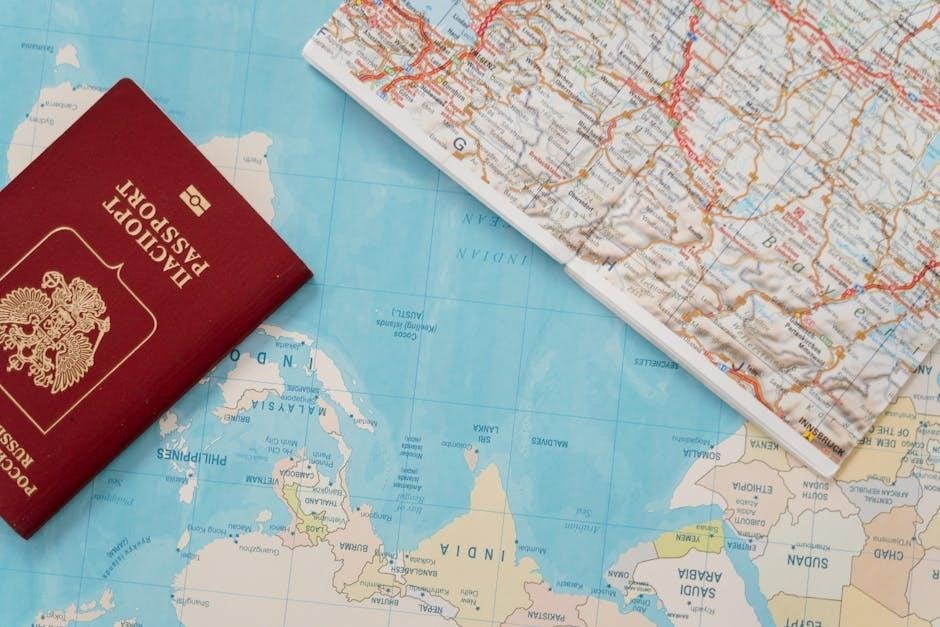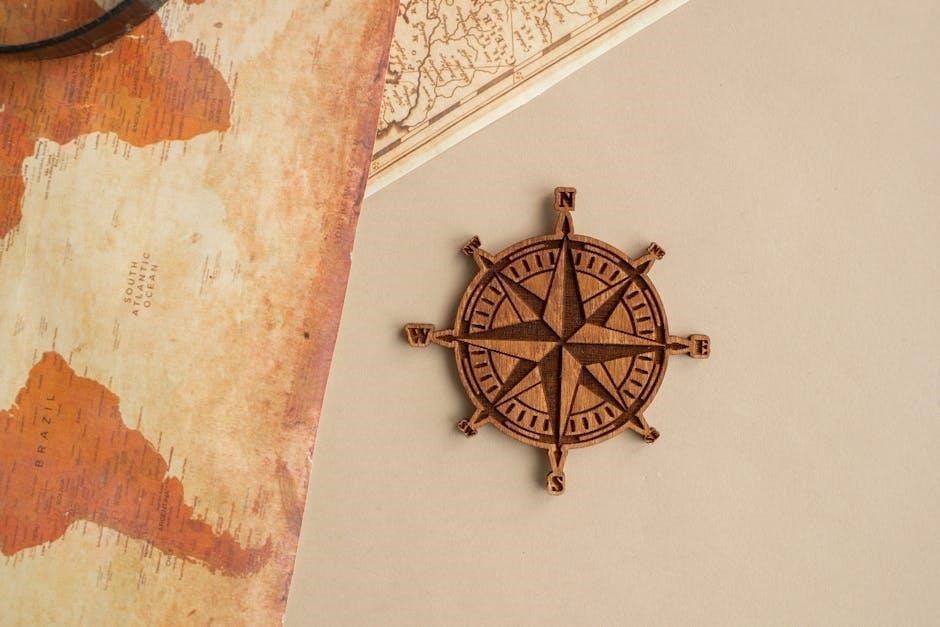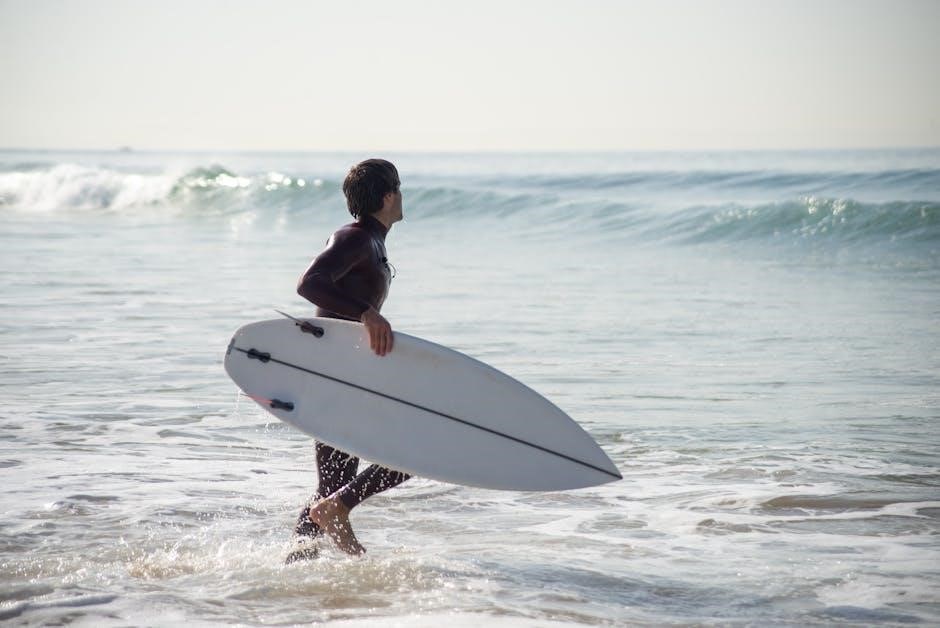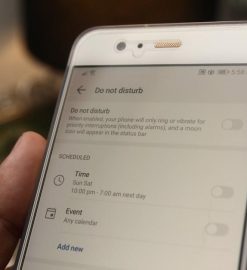billabong wetsuit size guide

Discover how to choose the perfect Billabong wetsuit with our detailed size guide. Proper fit ensures optimal performance, comfort, and warmth in the water. Learn how to measure accurately and match your dimensions to the chart for a seamless experience.
Understanding the Importance of Proper Fit
A well-fitting wetsuit is crucial for performance, comfort, and warmth in the water. A proper fit ensures flexibility, reduces water entry, and prevents restricted movement. If the wetsuit is too tight, it can restrict breathing and circulation, while a loose fit allows cold water to penetrate, reducing insulation. A correctly sized wetsuit enhances paddling efficiency, maintains body heat, and improves overall surfing or diving experience. Proper fit is essential for safety and enjoyment in water activities.
Overview of Billabong Wetsuit Size Chart
Billabong’s size chart offers a detailed guide to help you find the perfect fit. It includes measurements for chest, waist, and height, ensuring accurate sizing. The chart caters to a wide range of body types and preferences, providing options for both men and women. By following the chart, you can determine your ideal size, whether you prefer a snug or relaxed fit. This ensures optimal performance, comfort, and durability, making your water experience enjoyable and hassle-free.
How to Measure Yourself for a Wetsuit
Use a flexible tape measure to take chest, waist, and height over a swimsuit for an accurate fit, ensuring your Billabong wetsuit offers flexibility and warmth.
Step-by-Step Measurement Guide
To ensure an accurate fit, start by measuring your chest circumference at its widest point. Next, measure your natural waistline, usually just above your hips. Then, measure your height from the floor while barefoot or wearing flat shoes. Use a flexible tape measure and keep it level for consistent results. Double-check each measurement to avoid errors. These measurements will align with Billabong’s size chart, ensuring a wetsuit that fits perfectly, offering both performance and comfort in the water.
Essential Measurements for Wetsuit Sizing
Key measurements for sizing include chest, waist, and height. Chest is measured around the fullest part, ensuring the tape is level and not too tight. Waist is measured at the narrowest point, typically above the hips. Height is taken while standing barefoot or in flat shoes. These dimensions help determine the optimal wetsuit size, ensuring a snug yet comfortable fit. Accurate measurements are vital to match Billabong’s size chart effectively, ensuring both performance and durability in the water.
How to Ensure Accuracy in Measurements
For precise measurements, use a flexible tape measure and stand up straight. Chest measurements should be taken at the widest point, with arms relaxed. Waist measurements are taken at the narrowest part of your torso. Height is measured barefoot or in flat shoes; Double-check each measurement to ensure accuracy. Consider having someone assist for consistency. Proper alignment and a snug but not overly tight fit are key to matching your dimensions to the Billabong size chart effectively.

Reading the Billabong Wetsuit Size Chart
Understand the layout by focusing on height, chest, and waist measurements. Match your data to the chart for optimal fit, ensuring performance and comfort in the water.
Interpreting the Size Chart Layout
The Billabong wetsuit size chart is typically organized into a table with columns for height, chest size, and weight. Each size corresponds to specific measurements, ensuring a proper fit. To interpret the chart, match your measurements to the closest size. If your measurements fall between sizes, consider your body type and fit preferences—whether you prefer a snug or relaxed fit. Keep in mind that Billabong sizing may differ slightly from other brands, so it’s essential to use their specific chart for accuracy. Always ensure your measurements are taken correctly for the best results.
Understanding Chest, Waist, and Height Measurements
Chest, waist, and height measurements are critical for determining your wetsuit size. Chest size is measured around the fullest part of your chest, ensuring the tape measure is level and not too tight. Waist measurement is taken at your natural waistline, typically just above the hipbone. Height is measured standing upright to ensure accuracy. These measurements help determine the best fit for your body type, ensuring the wetsuit provides optimal flexibility and warmth without restricting movement. Proper alignment of these measurements ensures a comfortable and functional fit.
How to Match Your Measurements to the Chart
To match your measurements to the chart, start by comparing your chest size to the size options provided. Align your waist and height measurements accordingly to narrow down your size. If your measurements fall between sizes, choose based on whether you prefer a tighter or looser fit. Double-check your measurements against the chart to ensure accuracy and avoid sizing errors. This step ensures a wetsuit that offers both comfort and optimal performance in the water.

Choosing the Right Wetsuit Thickness
Wetsuit thickness varies from 2mm to 7mm, depending on water temperature. Thinner suits offer flexibility in warm waters, while thicker ones provide warmth in cold conditions.
Water Temperature and Wetsuit Thickness
Wetsuit thickness is directly tied to water temperature. In warmer waters (above 65°F/18°C), a 2-3mm wetsuit provides sufficient warmth without hindering flexibility. For cooler conditions (50-65°F/10-18°C), a 3-4mm thickness is ideal, balancing warmth and mobility. In cold waters (below 50°F/10°C), opt for 4-6mm or even 7mm for extreme cold. Choosing the right thickness ensures optimal thermal insulation and comfort, enhancing your performance in varying water conditions while maintaining flexibility for active water sports.
How Thickness Affects Flexibility and Warmth
Wetsuit thickness impacts both flexibility and warmth. Thicker wetsuits provide greater insulation but reduce flexibility, making them less ideal for high-movement activities. Thinner wetsuits offer more flexibility but sacrifice warmth. Billabong balances this by using high-quality neoprene that maintains flexibility in thicker suits. The right thickness ensures warmth without compromising mobility, catering to different water sports and preferences for optimal performance in the water.
Seasonal Guide to Wetsuit Thickness
Wetsuit thickness varies by season to match water temperatures. Summer suits are thinner (2/3 mm) for warmer waters, while winter suits are thicker (4/3 mm to 5/4 mm) for colder conditions. Spring and fall suits (3/2 mm) offer a balanced option. Billabong tailors thickness to seasonal needs, ensuring optimal warmth and flexibility. Choosing the right thickness for the season enhances performance and comfort in varying water conditions, making it essential for surfers and water enthusiasts.

Why Proper Fit Matters
A proper fit ensures maximum mobility, warmth, and comfort, enhancing performance in the water. A well-fitting wetsuit allows for a full range of motion and prevents water entry.
Performance and Comfort in the Water
A well-fitting wetsuit ensures a full range of motion and flexibility, crucial for active water sports like surfing. It traps warm air next to the skin, maintaining body heat. Proper fit prevents water entry, reducing flushing and energy loss. This enhances performance and comfort, allowing you to focus on your activity without distractions. A poorly fitting wetsuit, however, can restrict movement and lead to cold spots, hindering your ability to perform at your best.
Effects of a Poorly Fitting Wetsuit
A poorly fitting wetsuit can lead to restricted movement, discomfort, and reduced performance in the water. Excess material may cause chafing, while tight areas can restrict breathing and flexibility. Water entry through gaps reduces insulation, leading to cold spots and heat loss. This discomfort can distract from your activity and hinder overall performance. A wetsuit that doesn’t fit well can also rub against the skin, causing irritation and potentially leading to rashes or soreness after extended use.
How a Well-Fitting Wetsuit Enhances Performance
A well-fitting wetsuit enhances performance by providing maximum flexibility and comfort in the water. Proper fit ensures unrestricted movement, allowing for better control and efficiency during activities like surfing or diving. The even distribution of water trapped in the suit maintains optimal warmth, preventing energy loss from cold. Comfort reduces fatigue, enabling longer sessions. A snug yet flexible fit also boosts confidence, letting you focus on your performance without distractions. This perfect balance of fit and function keeps you performing at your best.
Common Mistakes When Sizing a Wetsuit
- Guessing your size without measuring.
- Not considering the wetsuit’s stretch.
- Ignoring body type and fit preferences.
Overestimating or Underestimating Your Size
One common mistake is overestimating or underestimating your size, leading to an ill-fitting wetsuit. A wetsuit that is too tight can restrict movement and feel uncomfortable, while one that is too loose may compromise warmth and performance. Always refer to the Billabong size chart and consider your body type. If unsure, size down for a snug fit or up for more comfort, depending on your preference. Proper fit ensures both warmth and flexibility.
Ignoring Body Type and Fit Preferences
Ignoring your body type and fit preferences can lead to discomfort and poor performance. Billabong offers varying fits, such as Slim Fit or Regular Fit, catering to different body types.Slim Fit suits lean builds, while Regular Fit accommodates broader frames. Consider your activity level and personal comfort—tighter fits offer more performance, while looser fits provide ease of movement. Always align your choice with your body type and preferences for optimal comfort and functionality.
Not Considering Wetsuit Stretch and Flexibility
Not considering wetsuit stretch and flexibility can result in a restrictive or overly loose fit. Billabong wetsuits are made from flexible neoprene designed for movement. Thicker suits offer more warmth but less flexibility, while thinner suits provide greater mobility. Always assess your activity level and how much stretch you need. Ignoring this factor can lead to discomfort or limited performance in the water, making it harder to paddle or move effectively.

Billabong Wetsuit Sizing vs. Other Brands
Billabong wetsuit sizing may differ from other brands due to unique cut and material designs. Always compare size charts to ensure the best fit for your body.
Comparing Billabong Sizes to Competitor Brands
Billabong wetsuit sizing can vary slightly from other brands, as each company tailors its fit to specific body types and preferences. Always check the size chart for accurate comparisons.
While some brands may offer a more relaxed fit, Billabong tends to focus on performance and comfort, ensuring a snug yet flexible design. It’s essential to compare measurements directly rather than relying on general size assumptions. This ensures the best fit, whether you’re choosing Billabong or another brand.
How Sizing Varies Across Different Brands
Wetsuit sizing varies significantly across brands due to differences in design, materials, and target markets. While Billabong focuses on a performance-oriented fit, other brands like O’Neill or Rip Curl may prioritize comfort or flexibility. This means a size medium in one brand might not fit the same as another. Always refer to the specific brand’s size chart for accurate sizing. Measurement guidelines and body type considerations also play a role in these variations, making it essential to compare apples to apples when choosing a wetsuit.
Why Consistency in Sizing is Important
Consistency in wetsuit sizing ensures a proper fit, which is critical for performance and comfort. Inconsistent sizing can lead to a wetsuit that is too tight or too loose, affecting flexibility, warmth, and overall functionality. Billabong’s consistent sizing allows customers to rely on accurate measurements, reducing the risk of sizing errors. This consistency also builds trust and simplifies the purchasing process, ensuring you can focus on enjoying your time in the water without worrying about fit issues.

Men’s, Women’s, and Kids’ Sizing Differences
Billabong offers tailored fits for men, women, and kids, accommodating different body types. Men’s wetsuits feature broader chests and shoulders, while women’s emphasize curves. Kids’ sizing is scaled down for smaller frames, ensuring a comfortable fit for growing bodies.
Gender-Specific Fit and Sizing
Billabong designs wetsuits with gender-specific fits to cater to anatomical differences. Men’s wetsuits feature broader shoulders and chests, while women’s styles emphasize a more tailored, curve-hugging design. These gender-specific cuts ensure optimal comfort and flexibility, addressing unique needs for performance and mobility. The sizing charts reflect these differences, offering precise measurements for chest, waist, and height to help users find the perfect fit.
Key Differences in Men’s and Women’s Wetsuits
Men’s and women’s Billabong wetsuits are designed with distinct anatomical differences in mind. Men’s styles often feature broader shoulders and chests, while women’s wetsuits are tailored with shorter torsos and curves to accommodate a more feminine silhouette. Additionally, women’s wetsuits may include features like narrower sleeves and unique seam placements for enhanced comfort and flexibility. These design variations ensure optimal performance and comfort for both genders, catering to specific needs and preferences.
How Kids’ Sizing Differs from Adult Sizing
Kids’ wetsuits are designed with smaller, shorter measurements compared to adult sizes. They feature shorter sleeves, legs, and torsos to fit growing bodies. Youth sizes often include more flexible materials for better movement. The sizing chart for kids uses junior or youth designations, ensuring a snug, comfortable fit. Billabong kids’ wetsuits prioritize warmth and flexibility, with thickness tailored for younger users. This ensures proper performance and comfort for children in the water.

How to Care for Your Wetsuit
Proper care ensures longevity and maintains performance. Rinse with fresh water to remove salt and sand. Use mild soap, avoiding harsh detergents. Gently wipe, not scrub. Air dry flat or on a wide hanger to prevent stretching. Store in a cool, dry place away from sunlight. For repairs, use specialized kits. Avoid extreme temperatures and consider professional service for major damage.
Wetsuit Maintenance for Longevity
Regular maintenance extends the life of your Billabong wetsuit. After use, rinse thoroughly with fresh water to remove salt and sand. Avoid direct sunlight, as it can cause fading and deterioration. Store flat or on a wide hanger to prevent stretching. Use mild soap for cleaning, and avoid scrubbing. Dry naturally, away from heaters. For minor tears, use a wetsuit repair kit. Professional repairs are recommended for major damage. Proper care ensures your wetsuit remains flexible and durable for seasons to come.
How to Clean and Store Your Wetsuit
For optimal care, rinse your Billabong wetsuit with fresh water after each use to eliminate salt and sand. Use a mild soap or specialized wetsuit cleaner, avoiding harsh chemicals. Gently scrub with a soft cloth, then rinse thoroughly. Avoid hot water and sunlight. Store on a wide hanger in a cool, dry place, allowing it to air dry completely. Regular deep cleaning every few weeks and using a wetsuit shampoo can maintain flexibility. Proper cleaning and storage extend the life and performance of your wetsuit.
Repairing Tears and Damage
Repairing tears in your Billabong wetsuit promptly prevents further damage. For small tears, use a wetsuit repair kit containing neoprene glue and patches. Clean the area around the tear with isopropyl alcohol to ensure a strong bond. Apply a thin layer of glue to both the tear and patch, then press firmly and let it dry. For larger damages, consider professional repair or contact Billabong’s customer service. Regular inspections and timely repairs extend the lifespan of your wetsuit, ensuring optimal performance and durability.

Trying On a Wetsuit Before Buying
Ensure a perfect fit by trying on a wetsuit before purchasing. Check for comfort, mobility, and proper sealing at shoulders, torso, and seams. Mimic swimming motions to assess flexibility and range of motion. A well-fitting wetsuit should feel snug but not restrictive, allowing optimal performance in the water.
Tips for Testing the Fit In-Person
When trying on a wetsuit in person, wear similar swimwear for an accurate fit. Move naturally to ensure flexibility and comfort. Check for proper sealing at neck, wrists, and ankles to prevent water entry. Ensure the wetsuit feels snug but not restrictive, allowing full range of motion. Test by crouching or stretching to confirm fit and flexibility. If possible, try it on later in the day, as bodies swell slightly throughout the day. These steps ensure the best fit for optimal performance.
What to Look for When Trying On a Wetsuit
Check for a snug fit around the shoulders, torso, and crotch to ensure proper coverage. Ensure the wetsuit seals well at the neck, wrists, and ankles to prevent water entry. Verify flexibility by moving your arms and bending at the waist. Avoid tightness that restricts breathing or movement. Look for even stretch and no bunching fabric. Pay attention to comfort and how the wetsuit sits on your body. These factors ensure a balanced fit for performance and comfort in the water.
How to Ensure the Perfect Fit
To ensure the perfect fit, start by referring to the Billabong size chart and compare it with your measurements. When trying on, make sure the wetsuit feels snug but not restrictive. Check that the seams align well with your body and there’s no sagging material; Pay attention to how the suit moves with you, ensuring it doesn’t bunch up or restrict your range of motion. A well-fitting wetsuit should feel like a second skin, offering both comfort and flexibility for optimal performance in the water.

Exchanges and Returns for Wetsuits
Billabong offers a flexible return policy, allowing exchanges or refunds within a specific timeframe. Ensure items are in original condition with tags attached for a seamless process.
Understanding Return Policies
Billabong offers a clear return policy for wetsuits, allowing customers to return items within a specified timeframe. Items must be in their original condition with tags attached to qualify for a refund or exchange. A restocking fee may apply in some cases. Refunds are typically processed within a certain period, and customers are responsible for return shipping costs unless the item is defective. Understanding these policies ensures a smooth process if adjustments to sizing are needed.
How to Exchange for a Different Size
To exchange a Billabong wetsuit for a different size, start by initiating the process through their website or customer service. Log into your account, locate your order, and select the exchange option. Choose the desired size and follow the prompts to complete the request. Return the item in its original condition with tags attached. Use the provided return shipping label if available. Allow time for processing, and ensure the new size aligns with the size chart for the best fit. Double-check the sizing chart before finalizing the exchange to avoid further adjustments.
What to Do If Your Size is Unavailable
If your size isn’t available, consider purchasing from authorized Billabong retailers or online marketplaces that may have stock. Check Billabong’s official website for restock updates or sign up for notifications. Explore alternative styles or sizes that might offer a similar fit using the size chart as a guide. Contact customer service for assistance or recommendations. Keep an eye on seasonal sales or new collections, as your size may become available later. Always verify the size chart before making a purchase from a different seller to ensure the best fit;

Troubleshooting Wetsuit Fit Issues
Troubleshooting wetsuit fit issues involves checking for proper alignment, flexibility, and comfort. Ensure the suit isn’t too tight or loose, and consult size charts or experts if needed.
Common Fit Problems and Solutions
Common fit issues include wetsuits being too tight, too loose, or restrictive in the shoulders and arms. Solutions involve trying different sizes, ensuring proper alignment, and choosing styles that suit your body type. For neck discomfort, opt for models with adjustable collars. If the wetsuit bunches at the lower back or knees, check the torso and leg lengths for a better fit. Refer to Billabong’s size chart or consult with experts to resolve persistent issues.
How to Adjust or Modify Your Wetsuit Fit
To adjust your wetsuit fit, use the built-in features like adjustable collars or Velcro straps. For a tighter fit, try layering or using wetsuit pads in key areas. If the wetsuit is too loose, consider professional alterations, such as shortening the torso or legs. Homemade solutions, like using wetsuit tape or DIY darts, can also improve fit but may risk damaging the material. Always test modifications carefully to maintain the wetsuit’s integrity and performance.
When to Seek Professional Advice
If your wetsuit fit issues persist despite adjustments, consult a professional. Experts can assess complex sizing problems, such as unusual body proportions or severe fit discrepancies; They can recommend custom alterations or alternative models tailored to your needs. For high-end or specialty wetsuits, professionals ensure modifications maintain performance and durability. Don’t hesitate to seek advice if DIY solutions fail, as improper fit can hinder performance and comfort in the water.



Leave a Reply
You must be logged in to post a comment.